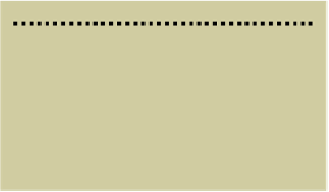Travel Reference
In-Depth Information
temple structures, as well as a sunken court with
stone friezes of jaguars. Here, archaeologists
have found pottery from all over the region
filled with
ofrendas
(offerings), including shells
from as far away as the Ecuadorian coast, and
carved bones (some human) featuring supernat-
ural motifs.
5 MUSEO SANTUARIOS ANDINOS (
CLICK HERE
), AREQUIPA
Paracas & Nazca
In the wake of Chavín, a number of smaller, regional ethnicities arose. Along the coun-
try's south coast, from about 700 BC to AD 400, the culture known as Paracas - situated
around modern-day Ica - produced some of the most renowned textiles created in the
Andes. The most impressive of these were woven during the period known as the Paracas
Necropolis (AD 1 to 400), so named for a massive grave site on the Península de Paracas
uncovered in 1927 by famed Peruvian archaeologist Julio Tello.
The magnificent textiles recovered from the graves - layer upon layer of finely woven
fabrics wrapped around mummy bundles - provide important clues about day-to-day life
and beliefs. Featured on these intricate cloths are depictions of flowers, fish, birds, knives
and cats, with some animals represented as two-headed creatures. Also significant are the
human figures, such as warriors carrying shrunken trophy heads, and supernatural anthro-
pomorphic creatures equipped with snake tongues and feline claws.
During roughly the same period, the Nazca culture (200 BC to AD 600), to the south,
was producing an array of painted pottery, as well as incredible weavings that featured
geometric and other images. These works showcased everyday objects (beans, birds and
fish), as well as supernatural cat- and falcon-men in an array of explosive colors. The
Nazca were skilled embroiderers: some weavings feature tiny dangling figurines that must
have induced blindness in their creators. But the culture is best known for producing the
Nazca Lines, a series of mysterious geoglyphs of animals and abstract geometric designs
carved into a 500-sq-km area in the desert.



